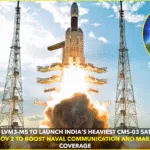In a significant leap towards autonomous ground warfare, Russia has unveiled its advanced “Shturm” robotic tank platoon system, which transforms Soviet-era T-72 and T-90 tanks into remote-controlled assault vehicles. Designed specifically for high-risk urban combat, this cutting-edge system aims to protect personnel while maintaining offensive capabilities in fortified zones.
Developed by Uralvagonzavod, Russia’s largest tank manufacturer, the Shturm system was created under contract with the Russian Ministry of Defense. The system comprises several repurposed armored vehicles equipped with specialized modifications, including shortened main guns, bulldozer blades for breaching operations, and enhanced frontal armor to withstand urban combat scenarios.
What sets Shturm apart is its ability to operate as part of a coordinated platoon controlled remotely via a command vehicle. This tank-based command unit can manage between 20 and 50 robotic tanks simultaneously within a 3-kilometer radius, enabling synchronized assaults without risking human lives. While not yet fully autonomous, the system uses remote piloting and onboard sensors to navigate and execute combat tasks in dynamic environments.
The initiative reflects Russia’s broader push toward unmanned ground combat systems, especially in the context of the ongoing war in Ukraine, where drone warfare has played an increasingly dominant role. As traditional battlefield dynamics evolve, Moscow appears determined to maintain strategic edge through automation and robotic innovation.
According to Russian state media and defense outlets, the Shturm vehicles are designed to breach heavily defended urban zones where conventional manned tanks would suffer high casualties. The bulldozer blades help clear debris and obstacles, while the shortened cannons are better suited for short-range engagements in confined spaces like streets and alleys.
The development of the Shturm follows several years of testing various unmanned ground vehicles (UGVs) like the Uran-9, which had mixed operational success. However, Shturm represents a more mature and ambitious system, capable of being deployed in formation, thus addressing earlier limitations related to coordination and tactical depth.
The system reportedly includes multiple variants, including those equipped with anti-tank missiles, heavy machine guns, and thermobaric weapons. The modularity allows for mission-specific deployment, enhancing flexibility in different combat scenarios.
Defense analysts see Shturm as both an opportunity and a potential liability. On one hand, it marks a technological milestone in robotic warfare, reducing risk to soldiers in urban operations. On the other, it raises concerns over battlefield ethics, collateral damage, and the proliferation of unmanned combat platforms that could be used beyond traditional warfare.
As of now, there is no official confirmation on when or where Shturm will be deployed, but its unveiling suggests that Russia could soon integrate these systems into real-world military operations, particularly in contested urban environments like those seen in Eastern Ukraine.
With the rising threat of drone strikes and the complexity of modern warfare, Shturm’s robotic tank system could reshape the future of ground combat. Whether it succeeds operationally or not, it underscores a major shift in how nations prepare for war in the 21st century.
Sources:










